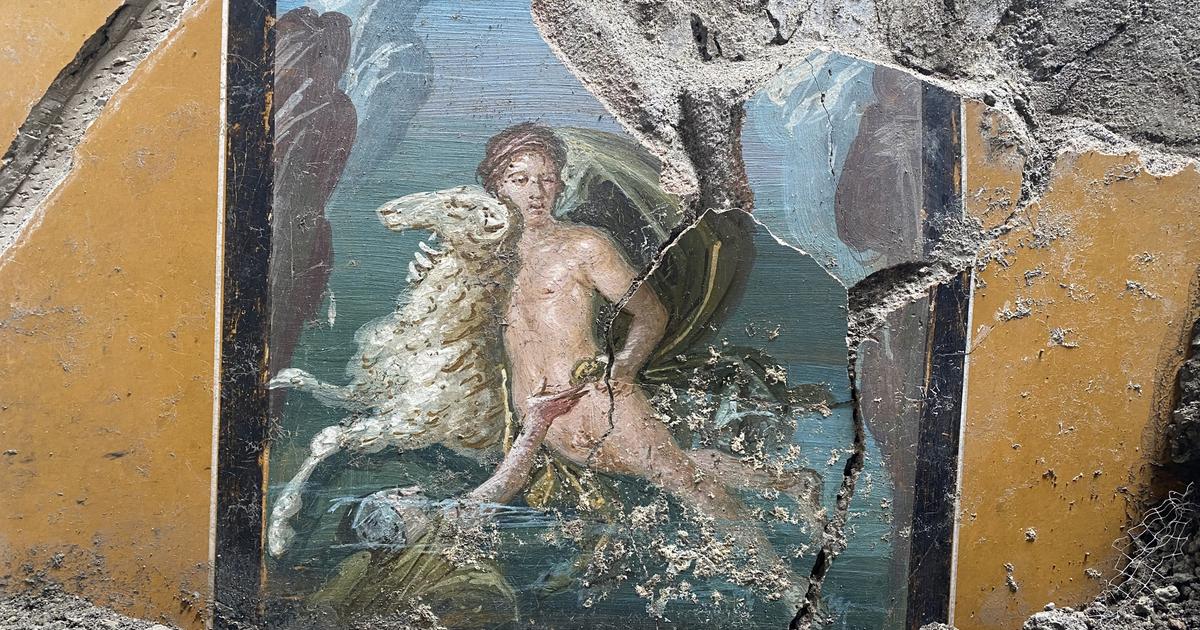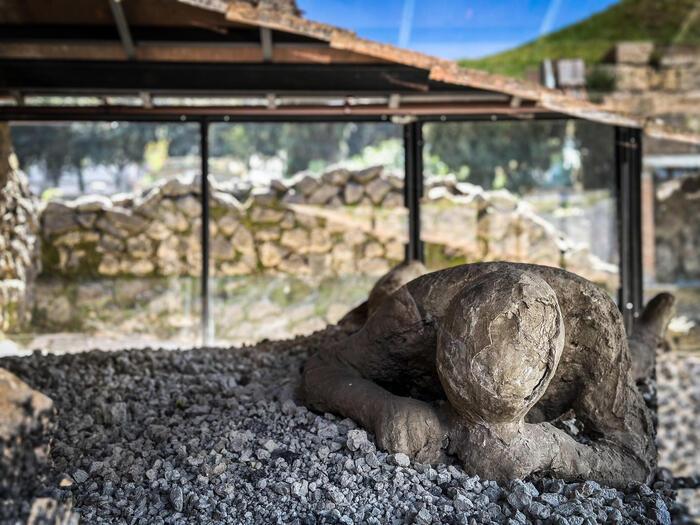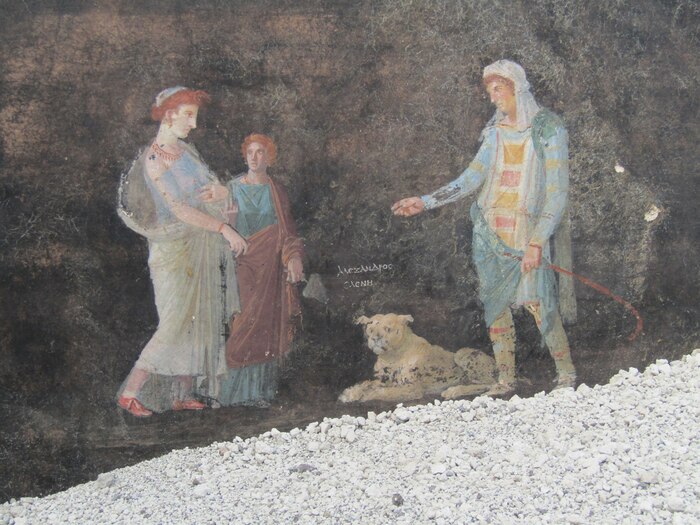The eruption of Vesuvius on August 24 (or October 24, as other investigations maintain) in the year 79 was one of the deadliest of those that occurred on European soil.
Between the two most affected cities, Herculaneum and Pompeii, excavations have found more than 2,000 dead.
Many were found in the
fornici
, a kind of port warehouse, trying to flee.
Others, the death caused by volcanic ash caught them in their homes.
This is the case of two people, a man and a woman, discovered in the dining room of the Pompeian
Casa del Fabbro
(of the craftsman) a century ago.
Now, a group of scientists has been able to extract their DNA and, at least in the case of the male, sequence for the first time the genome of a Pompeian from the Roman Empire.
It is not easy to retrieve genetic information from the past.
In addition to the passage of time, water and especially oxygen degrade DNA molecules.
Tissues and organs leave no trace, and only teeth and bones offer a chance.
Also, elevated temperatures, as evidenced by how difficult it is to get ancient DNA from fossil records in the tropics, don't help either.
That would explain why, despite recovering portions of human and animal genetic material from Herculaneum and Pompeii for years, it has never been enough to sequence it.
With temperatures of more than 300º that the ashes that covered the two cities must have had, as Thomaz Pinotti, co-author of the analysis of this couple, says, "this could have been the reason why we were not able to obtain relevant information on the DNA of the individual female".
But Pinotti prefers to turn it around: “It is more interesting to try to understand how we managed to sequence the DNA of the male individual!
We believe the ash kept it in an anoxic [oxygen-free] environment, thus slowing down its degradation.”
We believe that the ash kept the DNA in an anoxic [oxygen-free] environment, thus slowing down its degradation.”
Thomaz Pinotti, researcher in paleogenetics at the University of Copenhagen (Denmark)
The samples of genetic material were obtained from the petrous portion, part of the temporal bone, the one that surrounds the ear.
It is the first time that enough DNA has been obtained from a Pompeian to sequence it.
From their analysis, published in
Scientific Reports
, the researchers conclude that the man “looks very much like other genomes from Roman imperial times that we have available, leading us to believe that he was probably a local (or at least from the Italian peninsula),” Pinotti writes in an email, researcher at the University of Copenhagen.
However, some of his genetic profiles, in particular his Y chromosome, and his mitochondrial DNA, are highly unusual for both time and place, linking him to both modern-day Iranian and Iberian ancestors.
"We have to be careful about making inferences based on a single individual, but we think this assumes some Iron Age genetic diversity that was lost due to the homogenization of the Italian peninsula after the Roman Empire," he concludes.
Today,
Genetics, in this case paleogenetics, also suggests that this person suffered from what is known as Pott's disease.
Caused by Koch's bacillus, it is a version of tuberculosis that, instead of affecting the lungs, attacks the spine.
When he died, the study authors say, the man suffered from severe back pain, aggravated by exertion or coughing and sometimes accompanied by sciatica.
He would also have muscular contractions, which implies more pain, and general weakness, especially in the lower limbs, limiting his mobility.
Although the clue was given by genetic analysis, it was direct observation of the vertebrae that confirmed the diagnosis.
The researcher at the University of Salento (Italy) and co-author of the study Serena Viva recalls that tuberculosis was endemic in Roman imperial times, "but it is rare to find it in archaeological contexts because only small percentages leave skeletal changes, as in our case " .
For her, "this is an important piece of the clinical history of this disease."
Analysis of the man's vertebrae has shown that he suffered from Pott's disease, a form of tuberculosis in which bacteria attack the spinal column.Scorrano et al./Nature
The osteological study (bone clinic) shows that the man was between 35 and 40 years old and measured 164 centimeters.
For her part, the woman was somewhat older, around 50 years old and with a height of 153 centimeters.
Both were in the middle of the Roman population at the time.
Although they were found during excavations between 1932 and 1933, the study authors have combined their paleopathological and ancient DNA results with the excavation reports and photographs taken at the time to try to understand why they did not flee with the first eruption.
The man was reclining on the
triclinium
, that kind of
chaise longue
in which the Romans reclined while eating.
The woman was with her arms crossed, surrounding what must be a bag of coins, supporting her back (see image).
“The answer lies in their state of health and advanced age.
The man suffered from a rare form of tuberculosis with skeletal manifestations, a condition that would have forced them to have little mobility.
The woman was elderly and suffered from osteoarthritis, so she stayed there waiting, protecting a small treasure of coins, ”says Viva.
What they cannot know is if they stayed to wait for death or because they believed that it was the safest place.
"The woman was elderly and suffered from osteoarthritis, so she stood there waiting, protecting a small treasure of coins."
Serena Viva, researcher at the University of Salento (Italy)
Olga Rickards is an anthropologist at the University of Rome
Tor Vergata
, co-author and mentor of the main author of the study.
In addition to the concrete result of the work, Rickards highlights that the study "demonstrates the power of a combined approach to investigate ancient humans and confirms the possibility of recovering ancient DNA from human remains from Pompeii."
For her, it represents "a basis to continue with an extensive paleogenetic analysis in order to reconstruct the genetic history of the city's population."
In fact, together with colleagues from the universities of Florence and Ferrara, she directs a project under the title of
Pompeii: a molecular portrait
.
You can follow
MATERIA
on
,
and
, or sign up here to receive
our weekly newsletter
.









